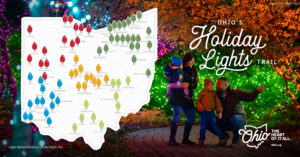Feeding feathers friends: study find complex relationships among bird feeders, predators and nest survival

Malpass (Photo: Courtesy of the subject)
COLUMBUS, Ohio – Backyard bird lovers may want to take note: putting out feeders full of seed may also attract predators that eat eggs and nestlings. Feeders, however, may also help satiate predators so they are less likely to target nests.
In a new study published in The Condor: Ornithological Applications, scientists from The Ohio State University and Cornell University investigated the consequences of supplemental bird food on predator-prey relationships.

In a four-year study of songbird nests, bird feeders and predators in seven central Ohio residential neighborhoods, Jennifer Malpass and colleagues tracked the relationships between the nesting success of two bird species — the American robinand northern cardinal — and the presence of potential nest predators such as other birds, domestic cats and squirrels.
Robins and cardinals are commonly found in mid- and understory vegetation in residential neighborhoods, where food is often supplemented via bird feeders.
Malpass was a researcher with Ohio State’s School of Environment and Natural Resources (SENR) at the time of the study. She’s now a wildlife biologist in the Bird Banding Laboratory at the U.S. Geological Survey’s Patuxent Wildlife Research Center in Maryland.
Co-authors on the study were Amanda Rodewald, director of the Cornell Lab of Ornithology and a professor in Cornell’s Department of Natural Resources, and Stephen Matthews, assistant professor of wildlife landscape ecology with SENR. SENR is part of Ohio State’s College of Food, Agricultural, and Environmental Sciences.
Complex relationships, species-specific responses
The scientists found that relationships among feeders, predators and nest survival were complex: Neighborhoods with lots of feeders had more cowbirds and crows — birds known to prey on songbird nests — but that generally didn’t affect the success of the nests the researchers monitored.
“One key message of our work is that there may be species-specific responses to anthropogenic (human-provided) foods,” Malpass said.
Robins did experience increased nest predation in one specific set of circumstances: when neighborhoods had both high numbers of bird feeders and large concentrations of crows. The crows may have been attracted by the bird feeders but weren’t completely satiated by the bird seed, leading to higher predation pressure on the robin nests.

A complementary study by the same team identified crows as the most common nest predator of robins, responsible for 53 percent of nest predations documented with video cameras.
Human-dominated environments, where bird food supplementation is common, are complicated, variable and don’t lend themselves to simple generalizations, Malpass said.
“Given the popularity of backyard bird feeding, this is a pertinent area for additional research,” she said.
Partnerships with homeowners important
Engagement of property owners was a key ingredient in conducting the study, the scientists said. They worked with more than 200 homeowners to monitor nests and survey predators in their yards.
“One of the challenges of conducting research in the suburban matrix is gaining access to private property,” Malpass said.
“In our experience, most of the residents in our focal neighborhoods were willing to allow access to their yards and had a positive experience being part of the project.”







